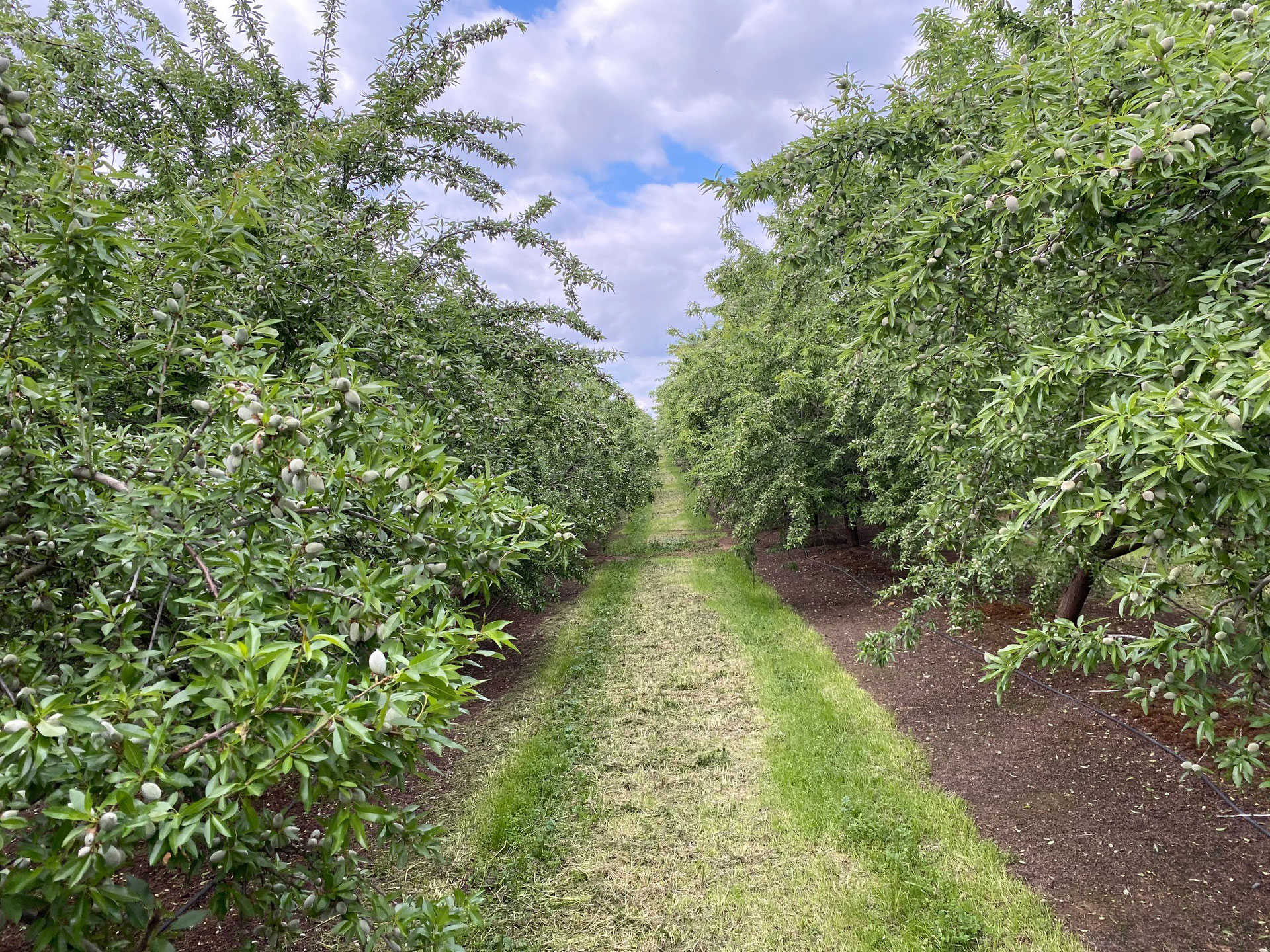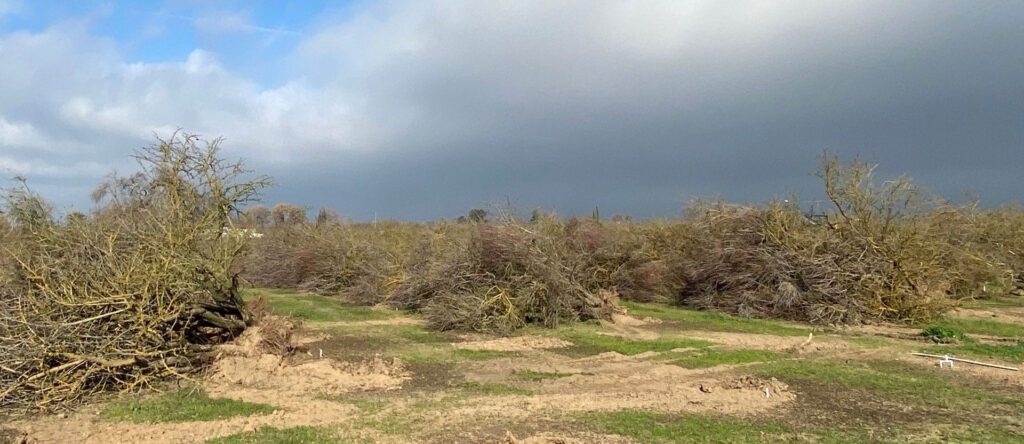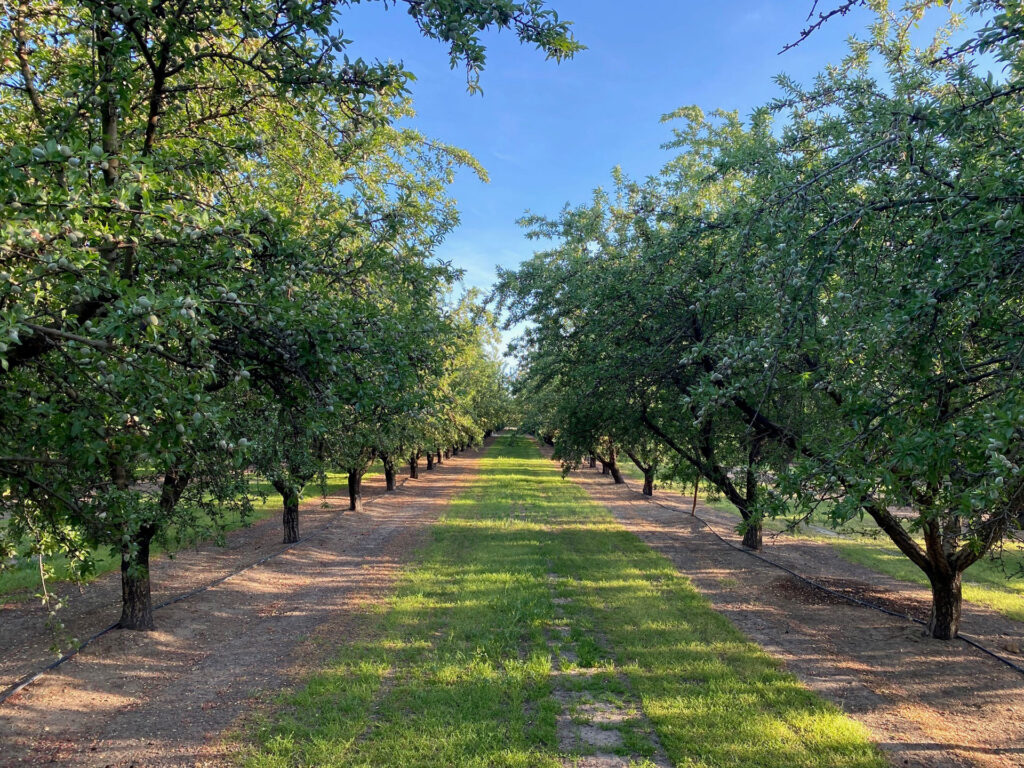
There is no doubt that production costs per acre in tree nut farming have cut into profit margins.
Rising labor and fuel costs are part of the production cost increase, but water availability and cost is ultimately the deciding factor in almond profitability.
According to information on almond production supplied by UCCE Orchard Systems Advisor Franz Niederholzer, since 2016, total cost per acre (at 2,200 pounds per acre) has gone from $3,890 to upwards of $4,000 per acre. While almond prices have fluctuated since 2016, they have garnered positive net returns for most growers.
Water costs and availability vary throughout the state, said CCA Bill Brush. Water is the most critical input as it determines crop production. Loss of water and reduced water quality is causing growers to make hard decisions on farming individual blocks of trees.
Growers who see their surface water deliveries cut can be forced to pump groundwater or buy water, placing them at the break-even point or even losing money depending on market prices. Paying higher prices for water to ensure good yields is difficult when the market demand is low. Brush said there is really no way to cut production costs without sacrificing yields.
“There is nothing to be saved. Cut back on pollination, you lose yields. Fungicides, fertilizers, they have a proven benefit to yield and crop quality,” he said.
There may be a little money to be saved here and there, he said, but the number one cost in UC production cost studies points to water.
In a 2019 report, the UC Agricultural Issues Center reported water costs will vary considerably depending upon the irrigation district and, when pumped, the pumping level, energy costs and type of irrigation system. Water costs may also change depending on availability and ground water regulations.
Their study for almonds in the southern San Joaquin Valley assumed 100% ground water usage and availability. An estimated cost of $22 per acre-inch ($264 per acre-foot) is used. A total of 52 acre-inches of water is applied to a fifth leaf orchard March to October. An additional six acre-inches are applied in January to leach salts and fill the soil profile. Costs for irrigation were listed at $1,264 per acre.
Tough Decisions
RPAC partner and almond grower Paul Ewing said the number one factor in considering the profitability of an almond orchard is the yields per acre. But, the same numbers don’t hold true for every almond growing region.
“If they have good water availability, and prices are historically high, unlike current prices, some growers might hang on to a 1,500 pound producing block a little longer. But, if water prices are high and availability is an issue, even a 2,200 pound block could get pulled out,” Ewing said.
Tree count per acre is another consideration on assessing profitability, Ewing said.
It is important that the value of the crop weighs on farming decisions. Outside of water, there are not massive differences in operating costs, Ewing said. With a strong market and a productive orchard, growers can still expect a profit.

Some almond growers are making the decision to pull orchard blocks due to water uncertainty, he confirmed. If the outlook for water does not look good, such as in some federal districts, they might look at removing orchards earlier than they would have.
In the almond industry, Ewing said, there is a price/market cycle where, when prices are low, there is an uptick in replanting. When prices are good, more orchards are retained.
Planting a permanent crop like nut trees is a long-term decision. Market trends and recent history are part of that decision, along with water outlook, Ewing said.
Sound Plans are a Must
Tom Vermeulen, a certified public accountant and an almond grower in the Modesto area, said growers must have a sound plan for their almond farming operation going forward. Stakeholders in the operation, including family members who depend on you to make good financial choices and your banker who must judge your decisions, rely on your financial plan, he said.
Considerations in the plan must include water availability or alternative land use, age of orchard and soil profile or amendments needed to optimize production. Those considerations are vital in a decision to invest in a new orchard for future productivity.

When assessing orchards, Vermeulen said, look at production per acre, cost per acre and cost per pound of nuts produced.
With those numbers, he said, the next step is to prepare a budget, including your expectations and changes that might occur. Plan an extra 5% to 10% for contingencies, Vermeulen suggested.
A farming plan for the next 5 to 10 years should also be laid out. Capital improvements, equipment needs and orchard replacement are major components. Loss of income and cash flow until an orchard is producing and debt service are important considerations.
Review the plan, Vermeulen said. ”Develop a best case, a worst case and reasonable expectation. Ask if the plan is SMART: specific, measurable, achievable, relevant and timely.”










